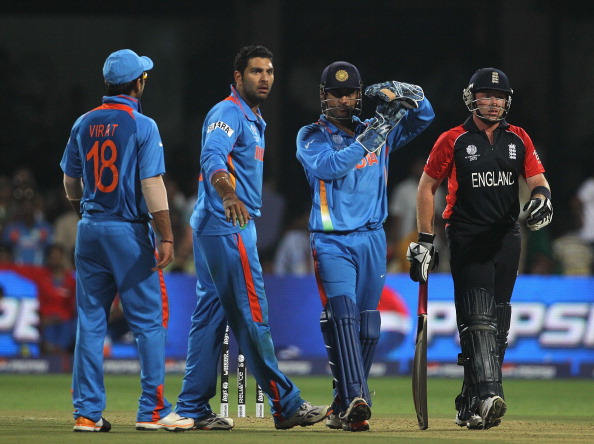No hotspot despite DRS in the India-England Test series
2 Min Read


The Board of Control for Cricket in India (BCCI) finally agreed to adopt the Decision Review System (DRS) in the upcoming Test series against England. But a latest report by the Mumbai Mirror suggests that the DRS technology deployed for the series will consist of the Hawkeye and the latest Ultra Edge for making decisions for lbw and close-in catches. While there is a possibility that it might be available in time for the Australia series next year.
As per the International Cricket Council’s (ICC) DRS rules, only the Hawkeye and Ultra Edge components are compulsory whereas Hotspot that is used as a value addition to identify the faintest edges is optional. The Indian board had placed an order for the Hotspot cameras but the Australian company that manufactures them won’t be able to deliver it in time for the Tests against England.
Warren Brennan of BBG Sports, which has patented these cameras was quoted by Mirror saying, “I am extremely disappointed that we are unable to provide Hotspot for the India-England series. These are very high end, extremely sensitive military grade cameras. Our company also has to apply for special licenses from the Australian Government to ship these cameras around the world,”
On its part, the BCCI had reached out to BBG Sports around six weeks back but the company will not be able to deliver it. “We were contacted by the BCCI about six weeks ago. When we order new cameras, it can sometimes take up to six months for them to be built, tested and delivered to us,” Brennan said.
Also read- Ashish Nehra aims to be fit before the series against England in early 2017
However the BBG official confirmed that they will most probably make it in time for the Australia series, that will be played in February-March next year. “After looking at the logistics we were not able to supply our systems for the England series but are able to supply them for the Australian series,” he confirmed.
The Hotspot cameras are infrared and use heat generation to produce the images. Given that fact that the ball turns in India, the technology will be more useful in the subcontinent. Brennan said, “Hotspot is particularly good on slow wickets which are prevalent in India where the ball is spinning a great deal. More spin creates more friction when the ball is hitting bat or pad and in turn, creates an even stronger heat signature on hotspot. We are very excited about potentially bringing our technology to India.”
Also read- MS Dhoni’s first coach feels his early struggle is the reason he is still grounded
For now, only Australia, England and New Zealand cricket boards use the technology that is quite expensive – “not only to buy but also to service.” The company though hopes to make them affordable for all the cricket boards. “Our company has been working hard to find ways of reducing these costs so that Hotspot and Snicko can be available to every cricket board,” Brennan signed off.
Download Our App